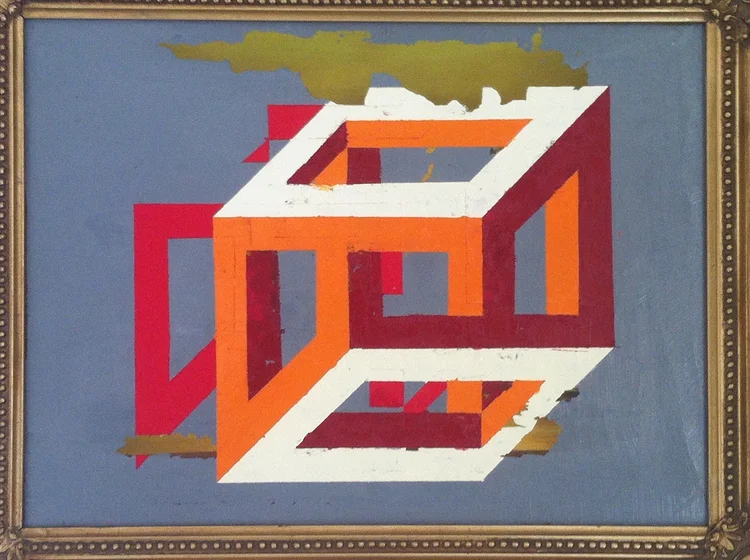Junction Show: Binaries
Thursday 18 December 2014
5:30-8:00 PM
It started with the Sigmar Polke retrospective I got to see this past summer. His use of commercial fabrics instead of canvas and playing with perceptions of reality and notions of what painting is supposed to be were inspiring. Here are a few works in the show that I loved: Alice in Wonderland, Solutions V, and Watchtower. You can see how I am appropriating some of these elements in the paintings before you.
Back in Asheville, I made the stretchers and then several runs to the Goodwill bins to gather fabrics. It was kinda like I was in that video for Thrift Shop. My wife, Elise Olson, who makes On the Inside Lingerie (Hey! back to the artwork already!) helped me choose and sew up the pieces so several of these paintings are true collaborations. The color palettes are based on DeKooning’s Gotham News and a package of Starbursts, Adolph Gottlieb's Pictograph, and the delicious counter top combo of a lemon, a lime and an avocado.
At that time I was wrestling with how much my kids were on screens, be it video games or tv or assorted devices, and in awe of the power of these machines to command so much perpetual attention. After all, the digital world is built on the foundation of a very simple principal: an electrical circuit is either on or off. It is either a 1 or a 0. It is something or it is nothing. Every digital gaze and all of the things in the digital world are built on this basic reality: a combination of ones and zeros.
Another influence here is the Mahayana Buddhist concept of emptiness or sunyata. This is sometimes represented in Japanese Zen calligraphy by the enso, a hand painted circle or, if you will, a zero. In Zen there is no essential identity to anything. Zero is ultimate. Yet we live in the world which is full of things, including ourselves. We live with ones. Zen, one might say, is a balance of ones and zeros.
So I wanted to make a series of paintings that reflect this digital world in a very hand made and analog way. The ones and zeros of the circuit board translate into binary code which is programmed into the words and shapes and colors we see on our screens and in these paintings. My perfect moment in this show is when the viewer looks up from their phone, sees the painting, then returns to their phone, all the while never seeing anything but ones and zeros.
